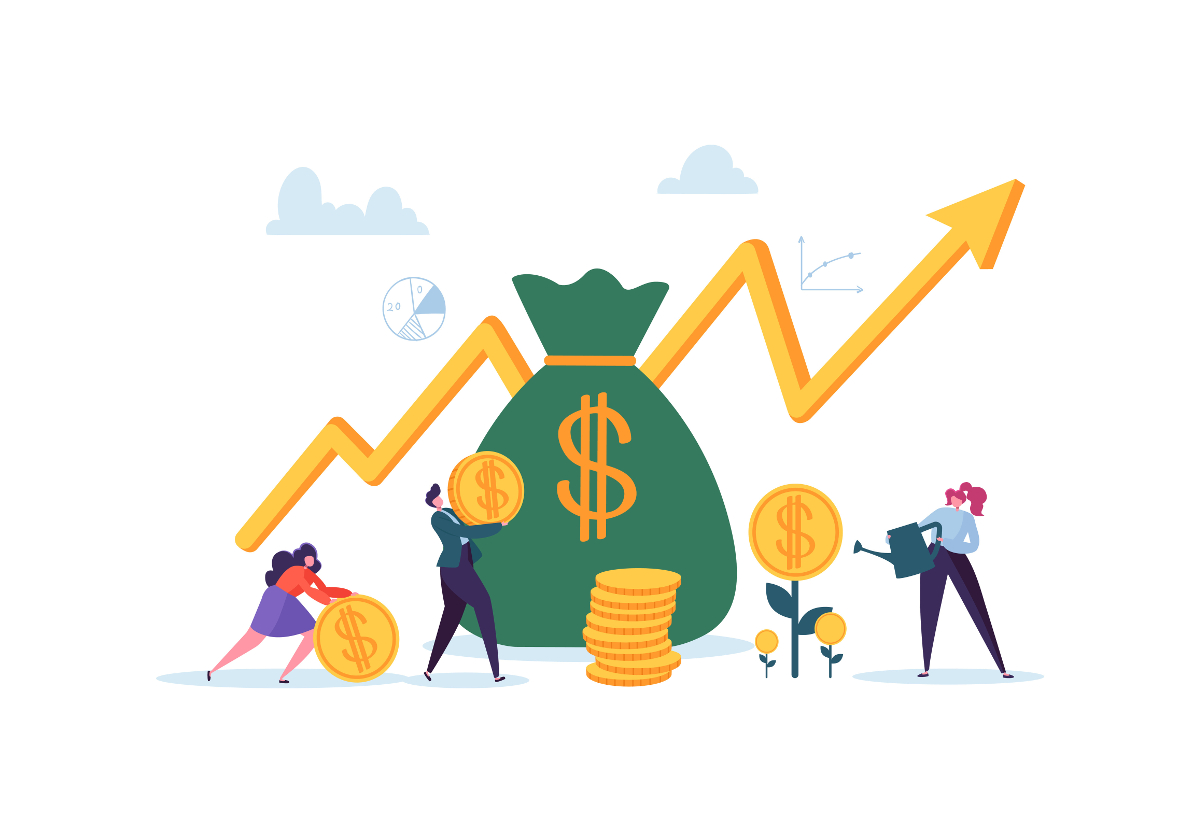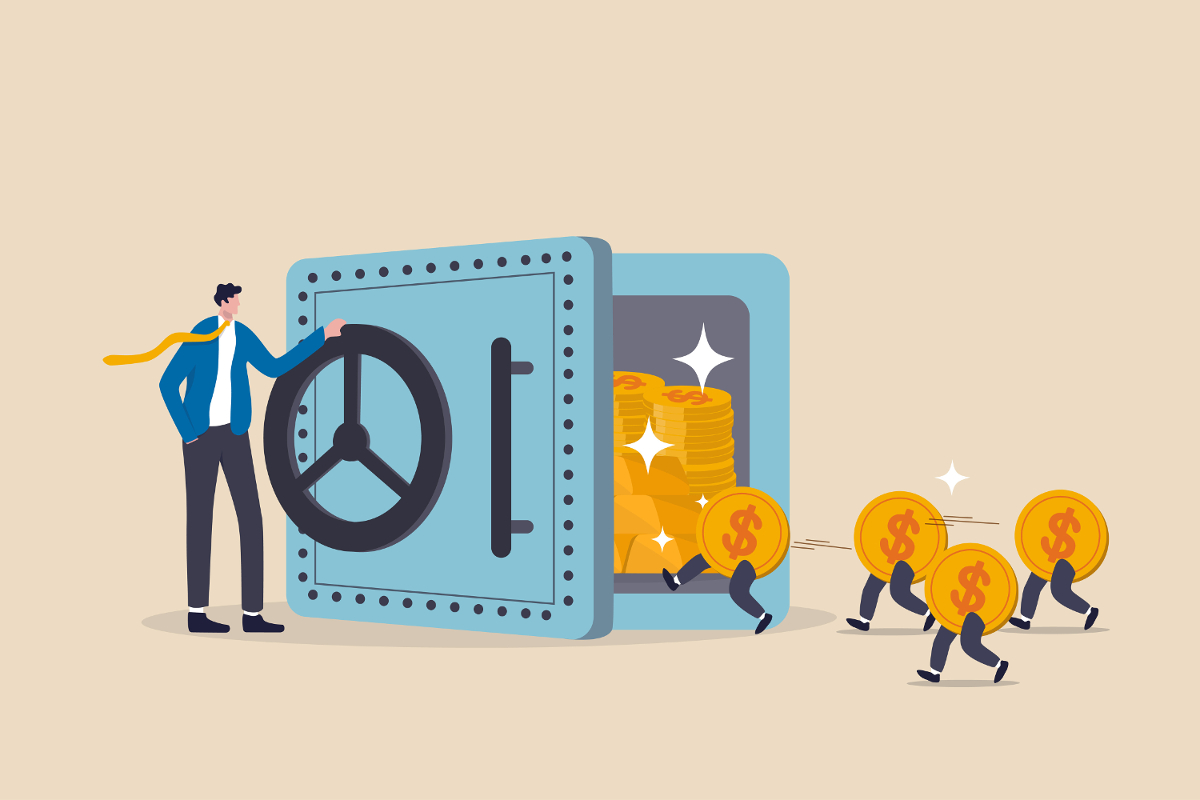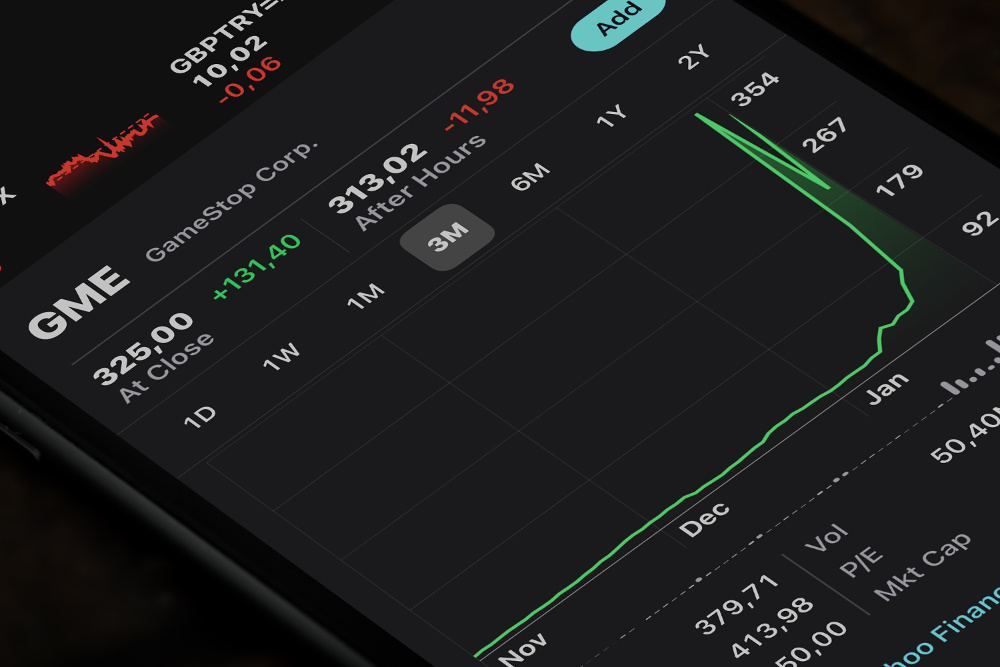Dividends don’t always arrive in the form of cash. Some stocks allow investors to automatically reinvest their dividend payments into additional shares. Here, we take a look at some of the positives and negatives associated with reinvesting investment income instead of receiving dividend payouts as cash.
So, you’re collecting dividend income from your investments.
Great!
Investing in quality dividend-paying stocks can be a brilliant way to boost your returns — see how one of my income investments paid back nearly half my capital in just four years.
There’s more to dividend investing than just getting paid to hold shares, though.
Some stocks don’t simply pay you a cash dividend on a regular basis.
They give you the option to reinvest your dividend income into additional shares.
As you’ll see in our post explaining dividend reinvestment plans (DRPs), this option can have powerful effects on long-term returns.
On a long enough timeline, a DRP could be the difference between making a few hundred thousand dollars on an investments, and a couple of million.
But that doesn’t mean that choosing a DRP for your investment income is always going to be the default best option.
In this post, I’m going to go through three pros and three cons of reinvesting your dividends.
I should point out, though, that this is by no means an exhaustive list.
(Nor does it constitute financial advice.)
DRP Pros: Compounding Through Increased Exposure & Saving On Brokerage Fees
- Compounding
I like what Einstein (allegedly) said about compound interest being the eighth wonder of the world.
The true wonder of compounding only becomes apparent with enough time.
As a long-sighted value investor, I try to let time work for me.
By that, I mean I look for quality, undervalued stocks and I buy them with a view to going ‘The Full Buffett’ and holding onto them for decades.
If you’re prepared to be patient and hold an investment for a long time, a DRP might work in your favour.
Why? Because over time, not only will your additional shares compound the size of your overall position, but you’ll receive more shares each time (since dividend amounts relate directly to your position size).
In some cases, with the right companies over a long enough time, you could double the size of your position simply by allowing reinvested dividends to accumulate.
- Increasing Your Exposure
Another advantage of using the DRP on an investment is that, over time (and again, the more time you allow, the more powerful the effect could be) is that accumulating more shares increases your exposure to the stock.
If you’ve selected a quality company to invest in, and the company’s stock increases in price over time, you will have more shares exposing your portfolio to that capital gain.
In simple terms, if you had 1,000 shares worth $10,000 in a company that rose 100%, you’d have 1,000 shares worth $20,000.
But if you’d reinvested your dividends and that had netted you, say, an extra 200 shares, you’d have 1,200 worth $24,000.
- Acquiring Extra Shares Without Paying For Them
One of the factors many investors neglect to consider when calculating their TRUE returns is brokerage fees and other transaction costs.
Generally, when you make a trade, you’ll pay your broker a fee to facilitate that trade.
This is another reason why I favour longer term, relatively inactive investing as opposed to buying and selling frequently, trying to chase trends or predict the market.
If I hold a single investment for 20 years, the fact that I paid, say, $100 brokerage becomes virtually irrelevant when I annualize my return.
And if you prefer not to let fees eat into your returns, you might like the DRP option, too.
Some stocks’ DRPs allow you to accumulate the additional shares for zero fees, since you’re not buying through a broker but rather have a direct agreement with the company itself.
So, those are three upsides to DRPs. In my view, investing this way only really delivers a meaningful advantage if you allow enough time for compounding, increased capital exposure, and the benefits of not paying brokerage on your additional shares to accumulate.
Now, let’s take a look at the downsides of DRPs.
DRP Downsides: Opportunity Cost, Less Control, And The Flipside of Increased Exposure
- You Don’t Control The Price Of Your Additional Shares
Acquiring additional shares through a DRP is great, in principle. Like I said, on a long enough timeline, and provided you’ve invested in a quality company that grows stronger and more profitable, it’s a sound idea to acquire more shares.
But like I also said, I’m a value investor.
I only buy shares in a stock I calculate is trading under its intrinsic value.
If you share that approach to buying stock, you may find that a DRP has an unintended downside; acquiring additional shares at prices above what you’d choose to pay were you analysing the stock with fresh eyes as a new investor.
Not only do you not get to choose the price you pay for each bundle of additional shares, you don’t get to choose the timing of the reinvestment, either.
So, in terms of control and in the spirit of not paying more than you want to, a DRP may be a downside.
- Opportunity Cost
The essence of the DRP is that you receive shares instead of cash.
As we know, this can have plenty of benefits, especially if you’re investing for the long term and intend to let the power of compounding work its magic over.
However, one potential downside of opting for a DRP over a cash dividend, is that you’ll miss out on opportunities to do things with that investment income other than automatically convert it into additional shares.
In other words, opting to reinvest your dividends could have a negative impact on your portfolio diversification.
Consider early 2021’s cryptocurrency bull market.
Say you’d been reinvesting your dividends in one of your stocks for five years, and you’d turned a $10,000 position into a $20,000 position (between capital gains and the DRP).
Not bad, a 100% gain.
But say you’d taken the cash dividend instead and invested it in Bitcoin, you could have exposed that income to far greater capital gains.
Of course, this is a simplistic example that benefits from hindsight (five years ago and even today, many still wouldn’t recommend cryptocurrency as a sound investment).
The takeaway here is, while a DRP can be a powerful tool in compounding your investment income and position size, it can also cost you the opportunity to invest your dividends in other assets and opportunities.
- The Flipside Of Increased Capital Exposure
This potential downside is a reflection of the potential positive we mentioned above — increasing your exposure.
Because, of course, if a DRP increases your exposure to a quality stock’s capital gains, it can equally expose your capital to greater losses.
This is something you should always take into account if you’re reinvesting your dividends back into a stock — and of course any time you invest — your capital is always at risk.
While the stock market does generally rise over the long term, that doesn’t mean every stock does.
Everything, in theory, can go to zero.
So if you were invested in a company that collapsed or went bankrupt, that increased exposure through your DRP could result in you losing more money than you might have if you had simply collected your dividends as cash.
Dividend Income: To Take The Cash, Or Reinvest?
Dividend reinvestment can be a valuable tool for the investor.
Of course, like any decision we’re faced with when trying to build wealth in the market, there are pros and cons.
Using a DRP to compound your income and capital can be a powerful way to grow your portfolio.
Compounding, increased capital exposure, and zero or few brokerage fees are in my view key benefits of utilizing a DRP.
On the other hand, increased exposure could bring increased risk, while DRPs may also inhibit you from investing in other opportunities or diversifying your portfolio.
The other key potential downside to DRPs is that you lose control over the timing and price of the additional shares your dividends will earn you.
In my opinion — and bear in mind I am not a professional investor or advisor — it’s important to view a DRP investment in both the wider context of your overall portfolio and financial goals, and — in my opinion — through the lens of long term investing.
I hope this post on the pros and cons of DRPs has been helpful for you.
I’ll leave you with one of my favourite investing quotes, from Warren Buffet’s business partner, Charlie Munger:



